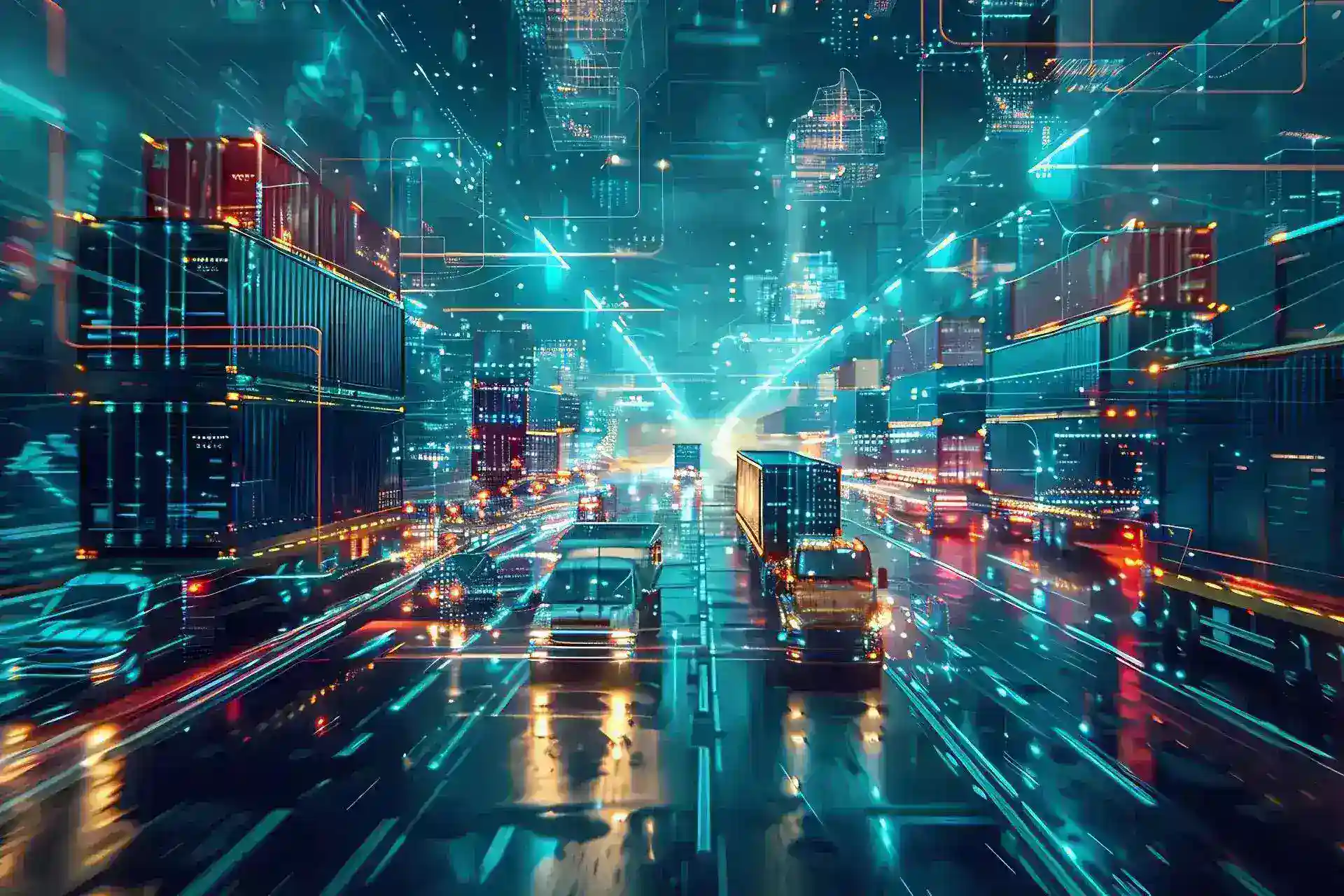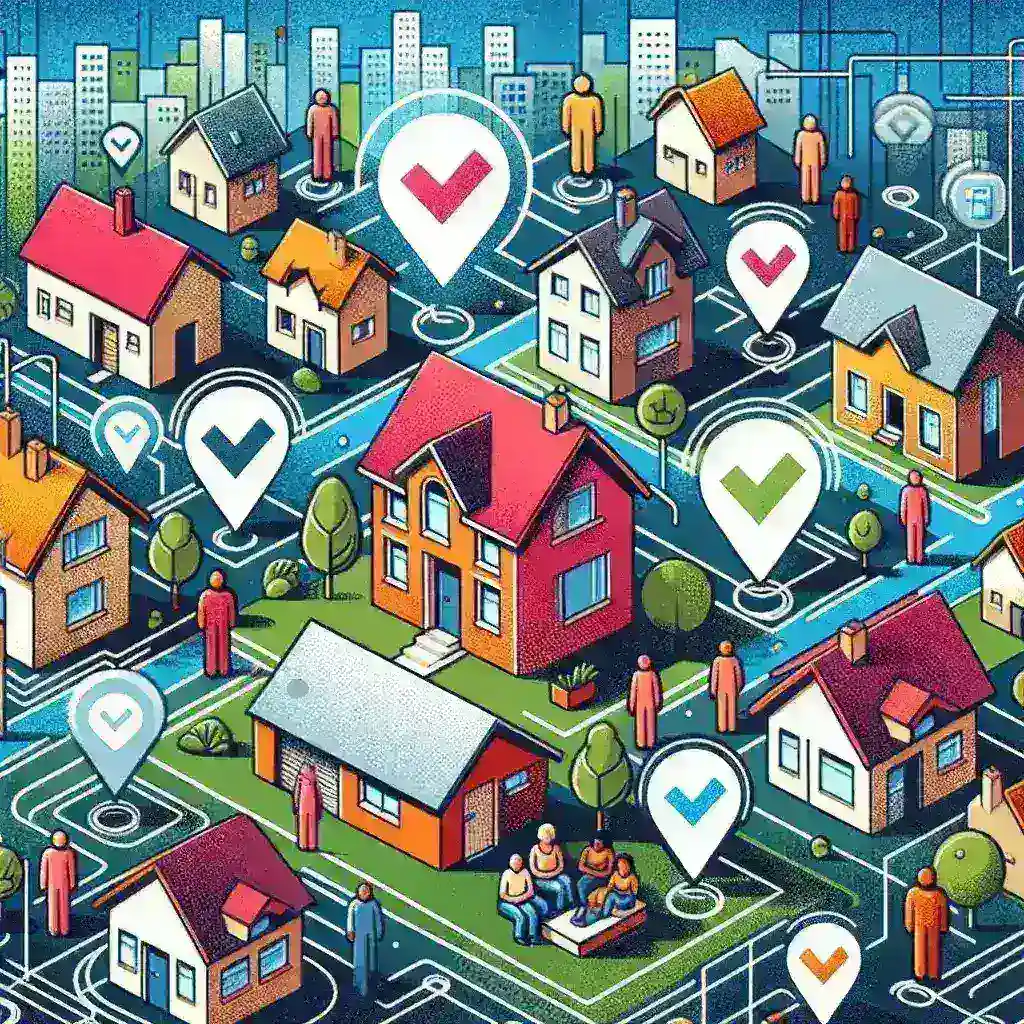Artificial Intelligence (AI) is driving a profound transformation in the transportation industry. From autonomous vehicles and predictive maintenance to smart traffic management and personalized travel experiences, AI is revolutionizing how goods and people move across cities and countries. As urbanization and global transportation demands increase, AI-powered solutions offer enhanced efficiency, safety, sustainability, and customer satisfaction. By leveraging vast datasets and advanced algorithms, AI is reshaping the future of transportation, setting new standards for mobility.
Autonomous Vehicles: The Future of Driving
Autonomous vehicles (AVs) represent one of the most significant advancements in AI-driven transportation. Self-driving cars, trucks, and drones rely on AI technologies like machine learning, computer vision, and sensor fusion to navigate roads, avoid obstacles, and make real-time decisions. AVs are poised to revolutionize the way we travel and transport goods.
Levels of Vehicle Autonomy
| Level of Autonomy | Description | Example Features | Current Example Vehicles |
| Level 0 | No automation | Driver controls everything | Traditional vehicles |
| Level 1 | Driver assistance | Cruise control, automatic braking | Tesla Autopilot (basic features) |
| Level 2 | Partial automation | Vehicle steers, accelerates, and brakes but driver must remain attentive | Tesla Autopilot, Cadillac Super Cruise |
| Level 3 | Conditional automation | Vehicle handles driving but human can take over when needed | Audi A8 (limited testing) |
| Level 4 | High automation | Vehicle can operate without human input in specific conditions | Waymo, Nuro (test vehicles) |
| Level 5 | Full automation | No human intervention required at any time | Future autonomous vehicle designs |
AI enables these vehicles to process data from sensors like LiDAR, radar, and cameras, allowing them to understand their surroundings and navigate complex environments. This shift will reduce accidents caused by human error, improve traffic flow, and lower the cost of transportation.
AI in Traffic Management Systems
AI is transforming traffic management systems by optimizing the flow of vehicles, reducing congestion, and enhancing overall road safety. Traditional traffic management systems rely on fixed timers or manual controls, but AI-powered systems can analyze real-time data and adjust traffic signals dynamically to improve flow.
Benefits of AI-Powered Traffic Systems
- Real-Time Traffic Monitoring: AI systems analyze traffic data from cameras, sensors, and GPS devices to make real-time adjustments, such as optimizing traffic lights based on current conditions.
- Reduced Congestion: AI algorithms can reroute vehicles away from congested areas, distribute traffic more evenly, and predict congestion patterns.
- Improved Safety: AI-based traffic systems can detect accidents or hazards and notify drivers or emergency services, potentially preventing secondary incidents.
AI-driven traffic management systems are essential for future smart cities, where efficiency, safety, and sustainability in transportation will be critical factors.
Predictive Maintenance in Fleet Management
AI is revolutionizing fleet management by introducing predictive maintenance, a significant shift from traditional time-based maintenance schedules. Instead of performing routine checks at predetermined intervals, AI predicts when vehicle components are likely to fail based on real-time data collected from sensors. This approach minimizes unnecessary servicing and reduces the risk of unexpected breakdowns, leading to more efficient fleet operations and better vehicle uptime.
How Predictive Maintenance Works
AI-powered predictive maintenance systems utilize data from various vehicle components, such as engines, brakes, and tires, to foresee potential issues. Machine learning algorithms analyze this data to detect anomalies, wear patterns, and signs of impending failures before they occur. By identifying these issues early, fleet operators can perform proactive maintenance, thereby reducing downtime and preventing costly repairs. The integration of AI with Internet of Things (IoT) sensors and telematics enhances this process, allowing for continuous monitoring and real-time decision-making, which leads to more effective maintenance practices and cost savings.
AI in Supply Chain and Logistics Optimization
AI is transforming the supply chain and logistics industries through advanced optimization techniques. It improves route planning by analyzing traffic patterns, weather conditions, and delivery schedules to suggest the most efficient paths. AI also predicts demand by analyzing historical data and market trends, which helps in better inventory management and reduces stockouts or overstock situations. Additionally, AI automates warehouse operations by managing inventory, sorting shipments, and coordinating logistics, leading to faster processing times and increased operational efficiency. The ability of AI to handle large datasets and make real-time decisions enhances the effectiveness of shipping and distribution processes, ultimately optimizing the entire supply chain.
AI’s Role in Optimizing Logistics
- Route Optimization: AI algorithms can analyze traffic patterns, weather conditions, and delivery schedules to suggest the most efficient routes for goods, reducing fuel costs and delivery times.
- Demand Forecasting: Machine learning models can predict demand fluctuations based on historical data, market trends, and external factors such as holidays, helping companies adjust their supply chains accordingly.
- Warehouse Automation: AI-powered robots and automated systems improve picking, packing, and shipping processes, reducing human error and improving overall warehouse productivity.
| AI Supply Chain Solution | What It Optimizes | Benefits | Example Companies |
| Route Optimization | Delivery schedules and routes | Reduces fuel consumption and delivery times | Onfleet, Descartes |
| Demand Forecasting | Anticipates changes in customer demand | Improves inventory management | ClearMetal, Llamasoft |
| Warehouse Automation | Picking, packing, and sorting | Increases productivity and reduces costs | Kiva Systems (Amazon), GreyOrange |
AI-driven logistics systems make supply chains more agile, ensuring that goods are delivered more quickly and efficiently, while also lowering operational costs.
AI in Public Transportation
Public transportation systems are adopting AI to improve efficiency, reduce operational costs, and offer a better experience for passengers. From autonomous buses and trains to real-time schedule adjustments and smart ticketing, AI is enabling public transit systems to be more responsive and user-friendly.
AI-Driven Innovations in Public Transit
- Autonomous Buses: Self-driving buses are being tested in cities worldwide, reducing the need for human drivers and making public transport more cost-effective and reliable.
- Real-Time Schedule Adjustments: AI can analyze passenger demand and real-time traffic conditions to dynamically adjust public transportation schedules, reducing wait times and improving service.
- Smart Ticketing Systems: AI-powered ticketing systems can analyze usage patterns and suggest the most economical fare options for passengers, leading to cost savings and a more personalized experience.
AI’s integration into public transportation is improving the efficiency and sustainability of mass transit systems, making cities more accessible and reducing traffic congestion.
AI-Powered Safety and Security in Transportation
Safety is a critical concern in the transportation industry, and AI is making significant strides in improving safety measures and protocols. By integrating advanced AI technologies into various systems, the industry can better identify and mitigate risks, enhancing overall safety on the roads.
Collision Avoidance Systems: AI algorithms are crucial in collision avoidance by processing data from vehicle sensors, such as cameras and radar, to detect potential collisions. These systems can autonomously apply brakes or adjust steering to prevent accidents before they occur. By reacting faster than a human driver could, AI significantly reduces the likelihood of crashes and enhances vehicle safety.
Driver Monitoring: AI-based driver monitoring systems keep track of driver behavior to ensure safety on the road. These systems use cameras and sensors to detect signs of fatigue, distraction, or impairment. If such signs are identified, the AI system alerts the driver to take corrective actions, such as pulling over to rest or focusing on the road. This proactive approach helps in preventing accidents caused by driver errors or lapses in attention.
Incident Detection and Response: AI-powered traffic management systems enhance road safety by quickly identifying incidents such as accidents, hazardous conditions, or road obstacles. These systems use data from various sources to detect incidents in real-time and can respond by alerting nearby drivers or redirecting traffic to avoid affected areas. This rapid response capability helps in minimizing the impact of incidents and ensuring safer driving conditions.
| AI Safety Technology | What It Monitors | Benefits | Example Companies |
| Collision Avoidance | Detects obstacles, pedestrians, or other vehicles | Reduces accidents and improves safety | Tesla Autopilot, Mobileye |
| Driver Monitoring | Tracks driver behavior and fatigue | Prevents accidents caused by human error | Nauto, Seeing Machines |
| Incident Detection Systems | Identifies accidents or hazards on the road | Improves emergency response times | Derq, RapidFlow |
AI’s ability to analyze real-time data and react instantly to changing conditions greatly enhances the overall safety and security of transportation networks.
AI in Ridesharing and Mobility as a Service (MaaS)
AI plays a crucial role in the development and efficiency of ridesharing platforms and Mobility as a Service (MaaS). By leveraging advanced algorithms and data analytics, AI helps manage and optimize vehicle flow, predict demand, and enhance overall user experiences. Ridesharing platforms use AI to match riders with available drivers in real-time, ensuring efficient and timely connections. Additionally, AI optimizes routes to minimize travel time and reduce fuel consumption, while predictive analytics forecast demand patterns to better align vehicle availability with peak periods. These AI-driven improvements lead to more efficient operations, shorter wait times for users, and a more seamless and satisfying transportation experience.




